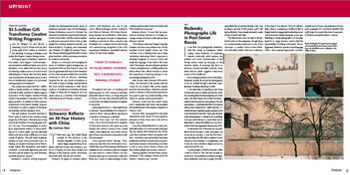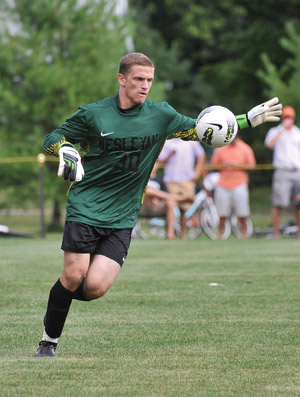EAST ASIAN STUDIES
 Thirty years ago, the United States opened its first embassy in the People’s Republic of China as our nation began reestablishing its relations with the country. Vera Schwarcz, professor of history and East Asian studies and director of the Freeman Center, remembers the events well. She was part of them.
Thirty years ago, the United States opened its first embassy in the People’s Republic of China as our nation began reestablishing its relations with the country. Vera Schwarcz, professor of history and East Asian studies and director of the Freeman Center, remembers the events well. She was part of them.
Schwarcz, an expert on Chinese culture, politics, and literature, was one of only seven official exchange scholars invited to visit China in February 1979 when the embassy opened. Her recollections of this time, and her subsequent 30 years of experiences studying in and about China, served as the foundation for a campus lecture that kicked off a semester–long recognition of the 1979 reopening at Wesleyan’s Mansfield Freeman Center for East Asian Studies.
Throughout her years of studying and teaching prior to 1979, Schwarcz had been physically close to China—in Hong Kong and in Taiwan—but was never allowed inside the country that she helped interpret and explain to the world.
Hand–picked by the U.S. State Department to discover “the possibilities for scholarly research in China,” she was able to see China in a way that no Westerner could then.
It may have been her non–western roots—she is the Romanian–born daughter of Holocaust survivors, who grew up in the Eastern Bloc before coming to the United States—that helped her most when she began to have more intimate conversations with Chinese people.
“Once I got into China,” she says, “it became very clear that I was not American–born. I think that many of the openings that became available for my oral history research emerged not only because I spoke Chinese, but also because I grew up in a communist society and there was a level of understanding of what could be said and what could not be said. And that carried me a long way.”
Marjorie Rivera ’12 says that her experiences studying Chinese as a foreign exchange student in China in 2005 echoed what Schwarcz shared.
“The Chinese welcome foreign language students but have a very indirect way of holding them at arms’ length,” Rivera says. “The summer I was in Beijing there was a large conference celebrating China’s openness in allowing foreigners to come to China and study the language. It was held in the Great Hall of the People. We were all given identical T–shirts and gathered in a stifling auditorium while official after official droned on about the importance of learning Chinese in our increasingly globalized world.”
Only 10 years after Schwarcz’s first visit to China, she returned to the country with her 5–year–old son in April 1989, as the student protests were escalating. It became a pivotal event in Schwarcz’s life and was important in her quest to gain true understanding of the nation, its people, and its government.
Schwarcz notes that the United States had a relationship with China that predated the establishment of the People’s Republic of China in 1949.
“Around 1949, we purged from the State Department every shred of China expertise because to know China was to be soft on China,” she said.
It was this attitude that led to a near complete elimination of communication between the two nations that lasted into the 1970s, until then–President Nixon re–opened relations. Since then, new partnerships have been established and the countries have moved toward better mutual understanding, but there is still so much about Chinese culture and the Chinese people that remains unknown.
“Piecing together Chinese history and experiences is like creating a whole vase from shards,” Schwarcz says.

